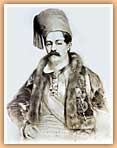 |

The antagonism between the autochthons and the heterochthons dated back to the years of the Greek Revolution, and became increasingly intense in the period 1833-1843. This was due to the way positions were filled and offices appointed in the newly-established Greek kingdom. The reason for this dispute was the third article of the embryonic constitution which was discussed during the course of the proceedings of the National Assembly of 1844. This article typically involved the determination of the properties of a Greek citizen. However, the discussion focused on the qualifications of state employees and centred on how the timing and geographical boundaries of the Revolution were determined. Thus there was an attempt to exclude the heterochthones who had come to the areas where the Revolution succeeded after the appointment of Kapodistrias and therefore did not have the 'qualification' of being a fighter. Conversely, the participation of the autochthons in the Revolution was taken for granted. The discussion and the renowned Second Resolution of the National Assembly, which purged the state apparatus of several dozen heterochthones - that is, those who did not correspond to the prescription of a Greek citizen - is considered a 'black page' in the history of the Greek state. But the victory of autochthonism was restricted to this resolution. In reality, the version of a 'little Greece', 'the tiny kingdom of the autochthons', was defeated in the context of the political and geographical unification of Hellenism, on the imposition of the Megali Idea, the Great Idea. It is not accidental that this term was created for the needs of the aforementioned discussion, during the celebrated speech of a prominent heterochthon, Ioannis Kolettis, on 14th January 1844. The success of the politician from Epirus lay in that, within the framework of a chiefly divisive discussion, he managed to evoke all the unifying visionary elements which connected the Greek populations within and beyond the Greek state.
|
 |